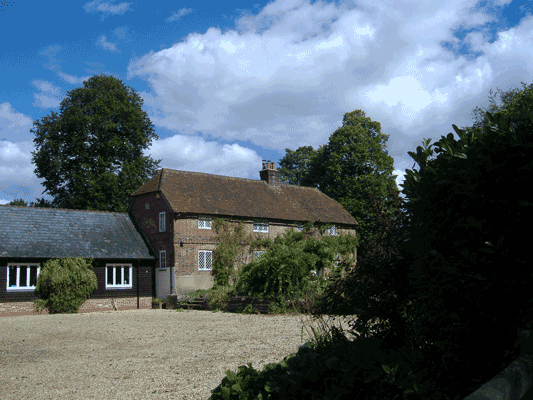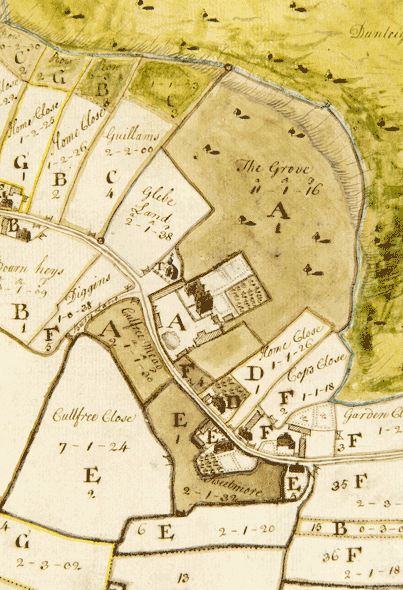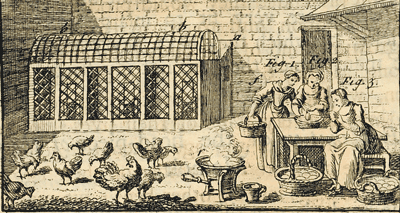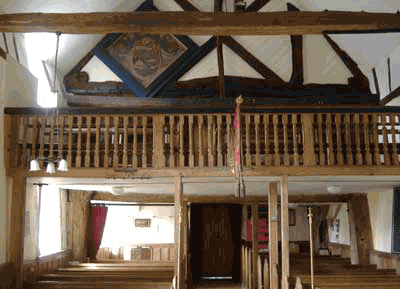
Contents
Introduction
One Mary Kinchin
Two Mrs. Bacon
Three Agriculture
Four The farmer’s wife
Five The physician
Six The kitchen
Seven Almanacs, chapbooks and other printed material
Eight The importance of religion
Appendices
1 Table of measurements
2 Mary Bacon’s list of books
3 Herbal remedies
4 Family tree
5 Inventory
Bibliography
Index
£15.00 (paper) 2010 234x156 mm 224pp 978-1-903152-28-7
Extract from Introduction

Documents containing both practical and literary insight into the life of a working farmer’s wife are extremely scarce; even the large collection in the Museum of English Rural Life library has proved unproductive. There is, however one such document in the Hampshire Record Office which offers insight into the inner world of a farmer’s wife of the ‘middling sort’, as well as illustrating all her practical responsibilities in the day-to-day running of the farm. Because of the scarcity of material in this field of research, it is a very valuable contribution to the limited knowledge we have of this group of women. This book examines this evidence and sets it against the background of the time.
The author was Mary Bacon (1743–1818), a farmer’s wife who lived approximately seven miles north of Alton in Hampshire. This, her legacy to future historians, is a very unusual, if not unique, document in the form of a ledger in which she made entries from 1789 to 1807. The book illustrates her work on the farm and adds a further dimension by giving an insight into her literary taste and religious meditations, showing, through her own reading list and copied written material, a background of both education and rusticity. She used an old account book belonging to her uncle Augustin Kinchin, a yeoman farmer, in which to make her entries. At first glance the book appears to be a ledger but only about half has been used for this purpose. As a result the document gives a remarkable insight into the work and mind of a farmer’s wife and contributes to what is known of both eighteenth-century reading and agriculture.
The ledger illustrates the role of a farmer’s wife in her everyday life and as an assistant on the farm. It includes accounts which were usually kept by men, but in this ledger it was the wife who entered sales of wheat, oats and barley, butter, wool and honey, her records ranging from the cows and horses her husband purchased, to household items such as the exact number of nails needed to repair the house. It is not surprising that she mentioned the weather in her ledger as diaries, newspapers, and letters written in the eighteenth century habitually contained such news. It was a subject as popular then as it is today. She also recorded farming reports, dates of fairs, and some indications of sale of stock. Her very full inventory, which includes all the brewing equipment she used, yields a colourful, detailed and very useful description of the entire contents of a late eighteenth-century farmhouse. A large section, ‘My Book of Receipts’, contains her favourite recipes together with cures to give family and friends for their sick animals and their own illnesses. ‘Twelve True Old Golden Rules’ is a conduct book in miniature, instructing a middle-class woman, who is doing much of her own housekeeping, how to look after her house economically.

Second, and of equal importance, is the light the ledger sheds on reading by middle-class eighteenth-century rural women. The document illustrates a wide range of taste in reading, both through a list of 59 books and the material which Mary Bacon copied into it. This includes long narrative renderings in prose and poetry of well loved Bible stories, a popular, amusing and moral tale of a soldier and a pack of cards, together with religious musings and hymns. Religion was important to Mary and she owned weighty tomes of sermons and meditations, prayer books and bibles. Although the ledger is not a diary, it includes the kind of almanac material frequently found at the beginning and end of diaries of the period, such as information about the West Indies, and the moon and planets, both popular subjects at the time. In a lighter vein, a disaster story, a trial, and a voyage, are included in her book list, and she also copied out a letter purported to be from Queen Charlotte to the King of Prussia complaining about his treatment of her native state of Mecklenburg, an unusual document which was in circulation at the time.
The ledger was started on 31 October 1748 by Mary Bacon’s uncle, Augustin Kinchin, a yeoman farmer who lived at Woodcote Farm (Woodcut, or Woodcott) in Woodmancott, a small village in north-west Hampshire. He continued making entries up to 11 October 1765, by which time his writing had become shaky and he may have been unwell. …
When Mary Bacon started making her entries, she and her husband William were farming in Cliddesden, a village immediately south of Basingstoke; they cover a further fourteen years after the family moved to Aylesfield farm, which is situated approximately three miles north of Alton. A ledger with entries by two separate people can be confusing. When turning the pages, such is the mixture that one is never sure what to expect next. Part of the accounts written by Augustin Kinchin from 1748 to 1775, in his elaborate, almost indecipherable, curling hand, may occupy a third of a page, while accounts in Mary’s neat sloping writing fill the rest. Another page turned at random contains some Kinchin accounts and a couple of loan notes, followed by the date of the Bacons’ daughter’s wedding. Yet more accounts are suddenly interrupted by Mary’s ‘ My Book of Receipts’, at the end of which she turned the whole ledger upside down and started again from the back.
Because entries in the ledger are often jumbled and haphazard, the material has been rearranged by subject matter for the purposes of this book. Augustin Kinchin, his ancestors, land and farming practices, provided Mary Bacon with a centuries-old background of rural life which had changed little. Inclusion of his accounts is important as they offer small insights into the daily life of a mid eighteenth-century yeoman farmer from the south of England. This background, symbolised in the keeping of her Woodmancott Prayer Book throughout her life, was obviously important to Mary, contributed to her early formative years, and is the subject of Chapter One.
A farmer's wife at work
Chapter Two covers her married life, her children, and house, Aylesfield farm, with all its contents. I am guilty of speculation as to her fears and pleasures, but certain events are discussed which may have been experienced, if not by her, then by those around her. There were periods of rejoicing, most of them concerned with national celebrations well recorded in newspapers, farming events, and local betting on the hop returns for the country. The continual cloud of war hung over the 1790s, resulting in bread shortages, escaped prisoners in the neighbourhood, and the pressure on farmers due to the increasing recruitment of men into the services, bleeding the land of much needed labour. The first part of Chapter Three considers the farming accounts, alongside material from reports to the Board of Agriculture. The second part of the chapter discusses the weather, a vital subject for farmers. Mary’s own reports are interspersed with records from contemporary diarists, graphically illustrating the biting cold of an eighteenth-century winter.
Chapters Four, Five, and Six are concerned with ‘My Book of Receipts’ which contains a long list of food recipes, and cures for animals and humans. Interspersed is information from contemporary documents which sets the ‘receipts’ in context, relates them to other similar writers and gives some idea as to how they were made. In Chapter Seven Mary Bacon’s list of books is examined and her own writing and copying of miscellaneous material discussed. Chapter Eight is concerned with religion and includes both writings in the ledger and an analysis of the books on Mary’s list which come under this heading. One section relates to an Oedipal version of the story of Judas Iscariot, which she copied out and which has been traced to a tract in the British Library and before that to a medieval source. The chapter concludes with some speculation as to the end of her life, and her musings on the soul. A series of appendices includes a family tree, a table of measures, the full list of books owned by Mary Bacon with bibliographical notes, and an annotated list of the plants most commonly used in her recipes. The original spelling and grammar has been kept in all quotations from the ledger.

When put together, the document offers a remarkable insight into the mental world of a middle-class farmer’s wife together with glimpses of her everyday life. Although this book is about a Hampshire woman, it is not confined to that county but is generally relevant to rural southern England. It contributes to the study of literacy in the eighteenth-century, giving some indication of the kind of reading material of interest to a busy farmer’s wife. It is about those women who were gradually gaining the freedom to read, middle-class women who were expanding their horizons and learning about their world on a much wider level than before. It is a history which many people leave, small facts about themselves, important dates in their lives, their likes and dislikes, and what they are paid, or spend their money on. This is only a small part of the story of Mary Bacon, a relatively unknown farmer’s wife, but these little histories add to our knowledge of the past. History is what we make it.
We can never get back into the past, but we can get a little nearer in an effort to understand it. No written work can stand alone; it is part of its time and must be considered in relation to the people and events of the period. Fascinating and useful though this ledger is (and no doubt an edition of it might have found some limited interest), its value is far greater when set against a contemporary background. In trying to bridge the gap in time, I have used the work of many contemporary writers, some printed and some in manuscript. They include newspaper editors, diarists, agriculturalists, and writers about a diversity of subjects, who were much closer to the age of Mary Bacon than we are today.
Some of the 25 images from Mary Bacon’s World
- Aylesfield Farm: General view from the front The author
- A detail from a coloured map of Woodmancott area By kind permission of the Warden and Scholars of Winchester College
- A farmer’s wife in her yard with the chickens. From de Reamur ‘The art of hatching and bringing up domestic fowls’(1750) Museum of English Rural Life
- The nave and gallery of Dummer Church The author